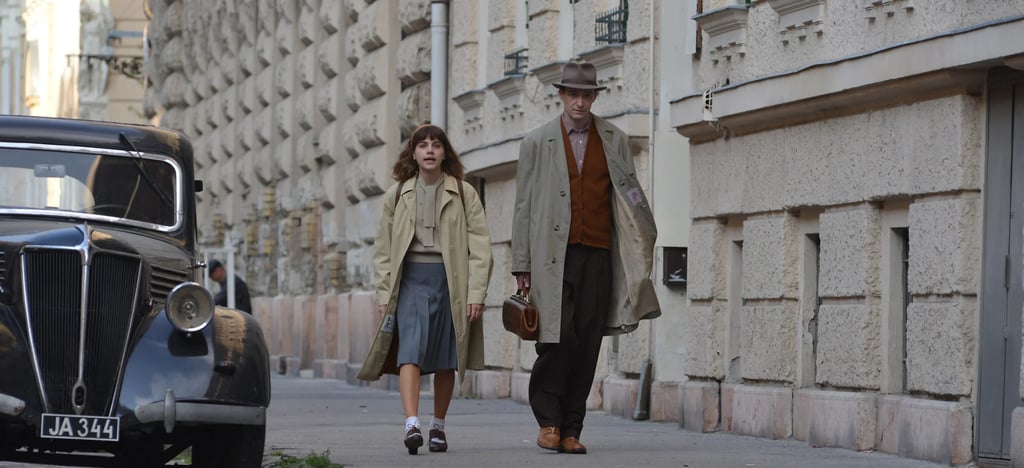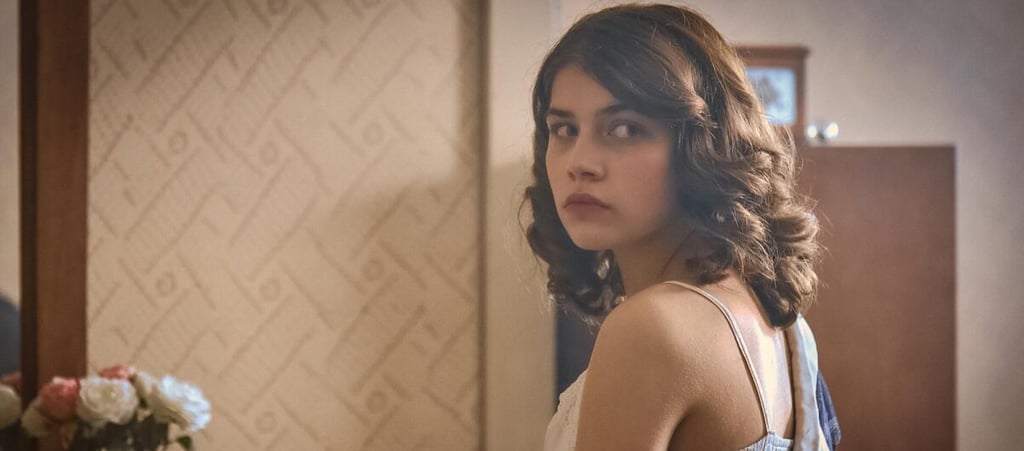Those Who Remained
A quietly beautiful exploration of trauma, unlikely friendship, and slow healing in post-Holocaust Budapest
A Healing Connection in a City Scarred
Those Who Remained opens in the devastated aftermath of World War II, with Budapest still bearing the physical and emotional scars of the Holocaust. In this landscape of grief and loss, two survivors find each other in lonely isolation. Mrs. Szentes, a schoolteacher, has lost her husband and children and drifts through days in numb routine. Rudolf, a teenage boy and fellow orphan, moves into her apartment complex under the guardianship of the state. The unexpected bond that forms between them isn’t romantic but transformative: through shared silence, practical care, and gentle routines, they begin to repair broken souls. Their ninety-minute daily walks become rituals of trust; Mrs. Szentes allows Rudolf into her home, blending sorrow with quiet warmth. Slowly, she learns to rejoin the world, and he learns to trust again. These small shifts in emotional connection carry the weight not of dramatic upheaval, but of subtle reintegration, illuminating how human connection can heal even the deepest historical wounds.
Quiet Intensity: Direction, Atmosphere, and Emotional Resonance
Director Barnabás Tóth navigates this story with a precision that honors the characters’ inner lives without dramatising them. His lens often lingers outside windows, framing figures in shadow, letting Budapest daily life remain a backdrop to stillness. Interiors are dim, austerely restored post-war apartments; clothing is muted, dusty—a palette of greys and browns. Dialogue is minimalist, reserved for functional exchanges or quiet revelations: a shared cough, a tender moment over breakfast, a cautious question asked at night. The tension in each scene is emotional, not narrative-driven: Mrs. Szentes’s tentative smiles, Rudolf’s half-dropped gaze—all gestures weighty with unsaid histories. Composer Gábor Keresztes’s sparse score lingers in cello tones or muted piano, never overt emotional manipulation but subtle emotional support. In its economy of expression, the film embodies restraint, atmospheric poignancy, emotional understatement, and visual empathy, inviting the viewer into the characters’ emotional worlds through ambient detail rather than theatrical confession.
Performances That Speak Without Words
Director Barnabás Tóth’s casting finds quiet strength in Andrea Petrik as Mrs. Szentes and Marcell Nagy playing Rudolf. Petrik’s face is a shifting palette—carefully guarded yet luminous in compassion; her voice level but charged with memory. Nagy brings a dignified composure to his teenage role—sometimes stern, sometimes pleading, always quietly present. Their chemistry is neither sentimental nor dramatic: it is conditional respect built over strong cups of tea and shared walks. Both deliver performances that respect silence as speech, controlled emotion as revelation. Critics praised their ability to convey history not through rhetoric but through gesture—Petrik’s slowing hand movements, Nagy’s steady patience—and the film’s final moments—a soft handshake, a whispered goodbye—are felt deeply. The power of their performances lies in emotional filtration: loss, fear and renewal, communicated not through tears but through presence.
Reception and Artistic Impact
Those Who Remained premiered at the International Venice Film Festival in 2019, where Andrea Petrik won the Volpi Cup for Best Actress. The film collected several festival honors across Europe and North America, frequently noted for its emotional subtlety and narrative restraint. Critics celebrated its minimalism and originality—seeing it as a standout in modern Holocaust-related cinema for refusing to dramatize suffering for spectacle. On Rotten Tomatoes it holds a high approval rating; professional reviews call it “a tender, almost silent testament to healing and humanity.” Its impact extends to cultural remembrance: Hungarian organizations recognized its importance in depicting a less explored facet of post-war trauma, promoting it in educational screenings alongside survivor testimony. The film has been described as “a whisper that lingers long after silence returns”—a cinematic whisper of empathy folded into shared memory.
Where and How to Watch
For those looking to screen Those Who Remained, it is currently available on Amazon Prime Video in several regions, often bundled with subscription or available for rental or purchase. Some limited European art-house streaming services, such as MUBI or regional Eastern European film platforms, also host it. Physical DVD or Blu-ray editions are produced in Europe and include subtitle options in English, German, and other languages. The film is rated for mature audiences due to emotional themes and contextual trauma. Viewing platforms with festival associations may offer brief discussions or director interview segments. For academic settings, the film is now included in some film studies syllabi focusing on post-war narratives, trauma and reconciliation. Its runtime of approximately 95 minutes makes it accessible for both concentrated viewing and classroom settings. Subtitles are recommended for non-Hungarian-speaking audiences to follow the delicate layered dialogue and internal monologues.


A Story Rooted in Authentic Witness
Those Who Remained is based on a novella by Zsuzsa Várkonyi, inspired by the true stories of orphaned Hungarian children remaining in Budapest after relatives were murdered or displaced. The film’s authenticity rests in small historical details: the mechanics of orphanage life, taxicab routines, rationed supplies, fumigation of apartments, social worker interventions with delicate discretion. Rudolf’s frequent offer to tuck Mrs. Szentes into bed, or her late-night pressings of tea for him—small gestures born of practical care and emotional reclamation—translate historical trauma into intimate moments. Mutual care emerges as resistance to despair. These touches honor the spirit of real survivors who had to navigate bureaucracies while privately mourning. The result is not abstraction but emotional illustration: we are invited to remember alongside them, sharing in their grief while witnessing tentative steps toward restoration. It is this combination of history grounded in domestic detail, fiction enriched by survivor authenticity, and character-driven resonance that gives the film its emotional intimacy and its careful moral weight.
The Power of Silence and Small Transitions
Much of the film’s emotional power derives from unsaid moments—pauses pregnant with memory, doors opened softly, cups passed over tables, eyelashes upside-down at the top of a child’s head. Mrs. Szentes’s silent recoiling away from conversations about the past, juxtaposed with Rudolf’s calm acceptance, reveals differing momentum on the road to healing. Their bond evolves slowly: a shared algebra lesson, a comforting hand on the shoulder, walking in silence across a snowy city. It is in these gradual changes—Rudolf taking initiative to comfort her, Mrs. Szentes allowing herself to laugh—that drama lies. Nothing is exaggerated, yet every gesture resonates. Critics describe the approach as poetic understatement, a narrative built in layers of emotional restraint. In comparison to more overt Holocaust-themed cinema, this film privileges musty interiors, childlike trust, survival kinetics, and gradual emotional thawing over spectacle.






Awarded with the Highest Distinction
Those Who Remained was honored with the Excellence Award for its powerful portrayal of emotional rehabilitation, delicate direction, and human-centered focus on healing. The film is worth watching not just as historical drama, but as a moving testament to the possibility of reconnection between souls shaped by loss. In its soft tone and resilient silence, it reminds us that sometimes the deepest courage lies in the everyday acts of caring—and that makes it undeniably worthy of distinction.







